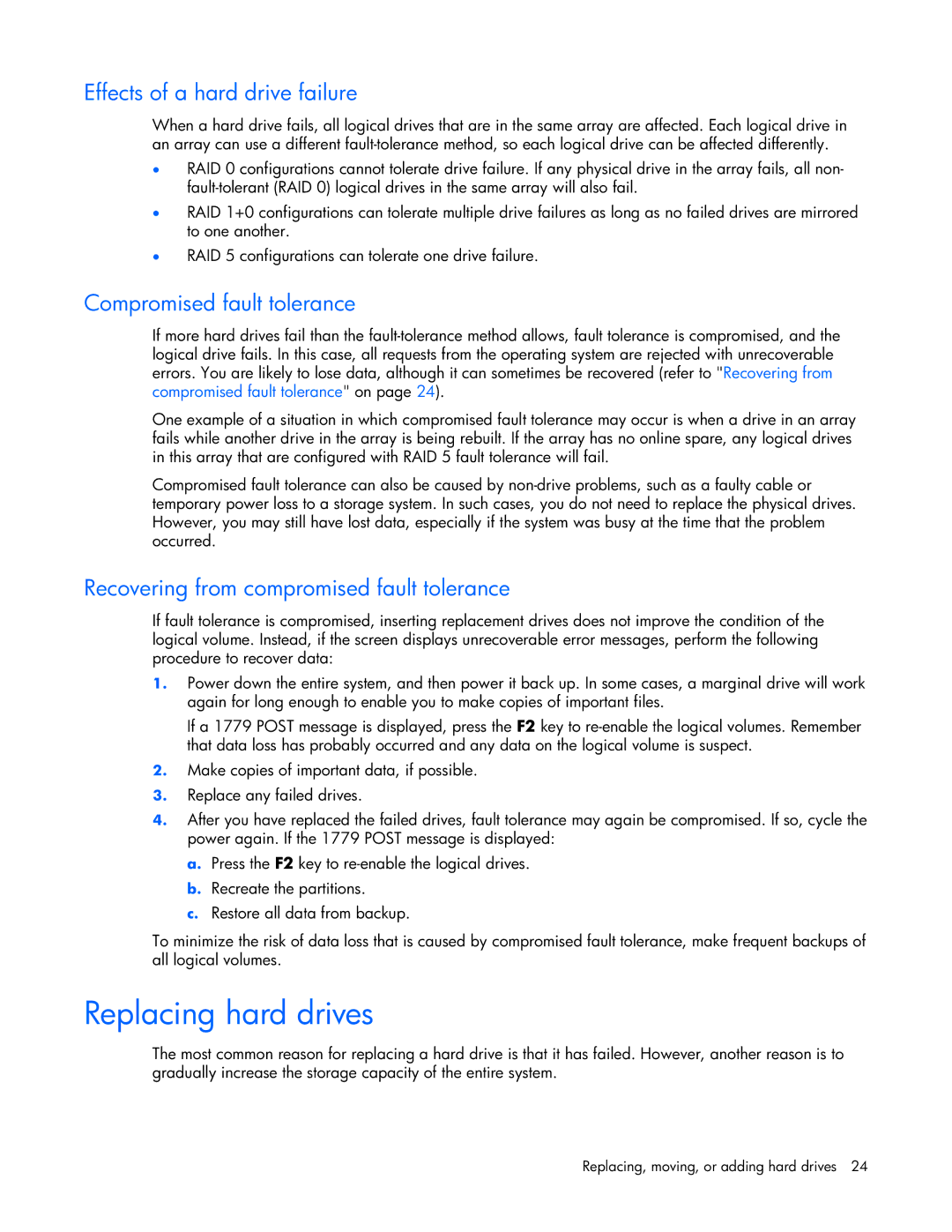Effects of a hard drive failure
When a hard drive fails, all logical drives that are in the same array are affected. Each logical drive in an array can use a different
•RAID 0 configurations cannot tolerate drive failure. If any physical drive in the array fails, all non-
•RAID 1+0 configurations can tolerate multiple drive failures as long as no failed drives are mirrored to one another.
•RAID 5 configurations can tolerate one drive failure.
Compromised fault tolerance
If more hard drives fail than the
One example of a situation in which compromised fault tolerance may occur is when a drive in an array fails while another drive in the array is being rebuilt. If the array has no online spare, any logical drives in this array that are configured with RAID 5 fault tolerance will fail.
Compromised fault tolerance can also be caused by
Recovering from compromised fault tolerance
If fault tolerance is compromised, inserting replacement drives does not improve the condition of the logical volume. Instead, if the screen displays unrecoverable error messages, perform the following procedure to recover data:
1.Power down the entire system, and then power it back up. In some cases, a marginal drive will work again for long enough to enable you to make copies of important files.
If a 1779 POST message is displayed, press the F2 key to
2.Make copies of important data, if possible.
3.Replace any failed drives.
4.After you have replaced the failed drives, fault tolerance may again be compromised. If so, cycle the power again. If the 1779 POST message is displayed:
a.Press the F2 key to
b.Recreate the partitions.
c.Restore all data from backup.
To minimize the risk of data loss that is caused by compromised fault tolerance, make frequent backups of all logical volumes.
Replacing hard drives
The most common reason for replacing a hard drive is that it has failed. However, another reason is to gradually increase the storage capacity of the entire system.
Replacing, moving, or adding hard drives 24
